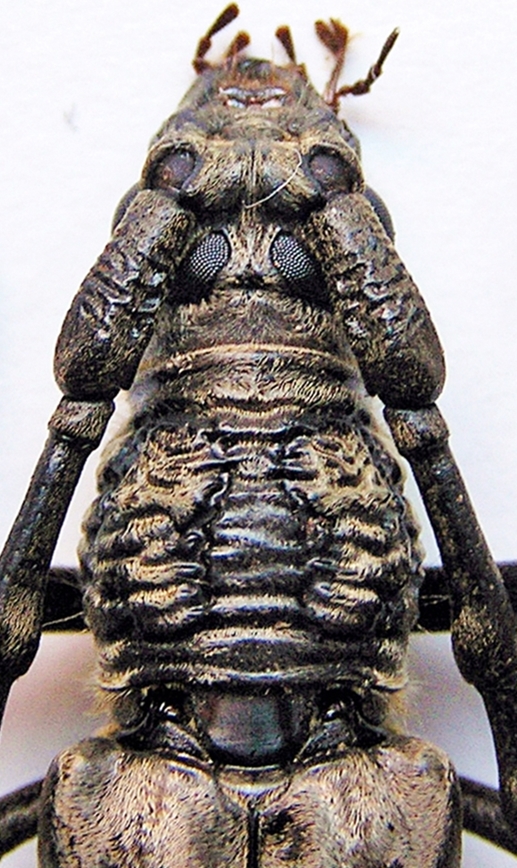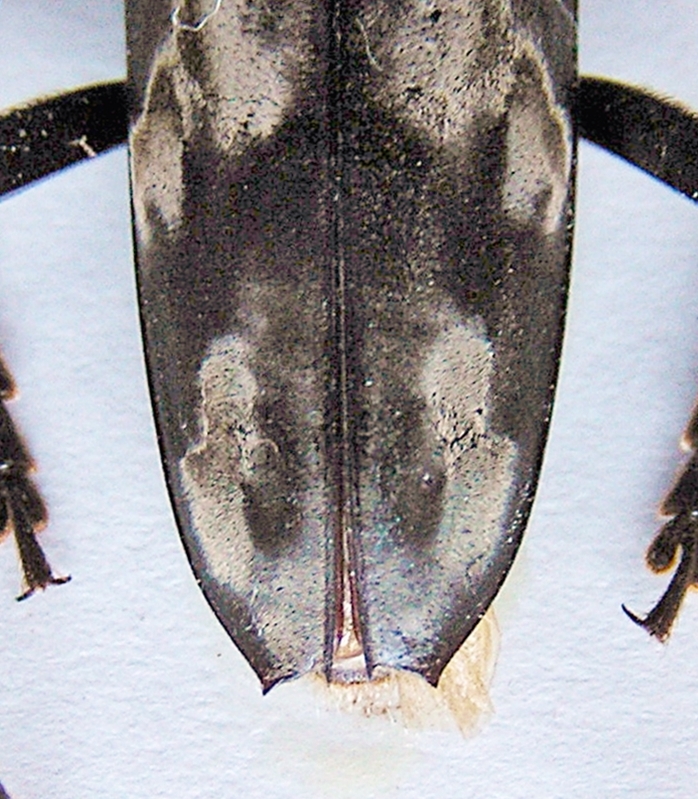| T O P I C R E V I E W |
| Greg |
Posted - 29/10/2019 : 17:11:45
 
Hi,
Please, help me with ID of this beauty.
BL - 38mm
Axan Mt.Quang Nam Prov.
Many thanks in advance.
Greg |
| 14 L A T E S T R E P L I E S (Newest First) |
| Gerard |
Posted - 04/10/2022 : 21:01:13
merci félicitation |
| Francesco |
Posted - 04/10/2022 : 12:36:47
Following Dan's suggestions, I tried to solve this problem through this paper.
A new genus Furcaeolesthes has been introduced; Parolesthes has been moved as subgenus of Trirachys. |
| cerambyphil |
Posted - 05/02/2021 : 16:07:26
Taking into account all the criticisms, I am going to start writing a new article to put the Parolesthes genus back in order.
You can contribute to this work by sending me your photos and data concerning your species of Parolesthes, as well as your species of Trirachys whose scape is not wrinkled (corresponding for example to Aeolesthes laosensis Gressit & Rondon, 1970 or Trirachys pseudosinensis Vitali et al., 2017). Thus some specimens would be able to be designated among the different types.
|
| dryobius |
Posted - 04/02/2020 : 14:54:36
The following is my opinion and interpretation of nomenclatural rules. Please do not take it personally... anybody!
There are many papers being published with apparently no peer review. I understand how exciting it is to describe a new species, however there are probably thousands of species awaiting description. So everyone, please take your time and get some opinions from other people, especially before describing a new species from 1 or 2 specimens.
Philippe, regarding your paper, I do not see any issue regarding to or pertain to "misidentification" and the application of ICZN rule 70.3. So I simply believe your designation of a new type species has absolutely no value.
Furthermore, once a type species has been designated legitimately, there is absolutely no way to change it. Thus, Vitali examined the holotype of Aeolesthes laosensis Gressit & Rondon, 1970 and designated it as the type species of Parolesthes which will last forever.
I have reviewed one or two papers for Zootaxa, where authors thought they could re-use a genus name that was a synonym of another genus. So not everybody understands the concept of type-species and its importance in taxonomic / nomenclatural stability.
There is now some confusion as to what your paper has created and how it has been interpreted. Is Aeolesthes laosensis now in the genus Trirachys? You cannot designate a new type species for Parolesthes, but your proposal to transfer A. laosensis to Trirachys may be legitimate (however it may not be completely agreed upon by others) If your 3 new species are not in the same genus as A. laosensis, then they can not be placed in Parolesthes, because Parolesthes would be a synonym of Trirachys, now because you may have legitimately (though not popularly accepted) moved the type species of one genus into another. Perhaps your new species are not even valid, because of your actions, you stated that these three new species are not in the same genus as Aeolesthes laosensis (which may now be in Trirachys and which is also the type species of Parolesthes), they do not exist in any genus! And as Francisco believes, they may have already been described.
I think that every author who publishes a paper by himself, should use a journal that requires a peer review. I think there are several journals (unfortunately) where you can publish anything within a period of a few weeks or month without having anybody look at it. There is every type of mistake that you can imagine in some papers. |
| Francesco |
Posted - 04/02/2020 : 10:46:19
I completely agree; moreover, some of these new species might correspond to Pachydissus langsonius Fairmaire, 1895, whose type in Paris (here) has been recognised as a false (Cf. Vitali et. al., 2017).
This Vietnamese species was characterized by smooth antennomeres and the designation of a neotype, selected by topotypical specimens conserved in MNHN Paris, was propaedeutic to new publications on this subject. |
| dryobius |
Posted - 04/02/2020 : 01:18:46
I corresponded with a colleague who also believes that the designation of a new type species for Parolesthes Vitali et al, 2017 is an invalid nomenclatural act. |
| Xaurus |
Posted - 04/02/2020 : 00:46:50
I think you are right Dan !! the confusion in Cerambycini is larger than before  |
| dryobius |
Posted - 03/02/2020 : 18:52:16
Philippe,
If the type species of Parolesthes was transferred to another genus, the preferred action would have been to make Parolesthes a synonym of Trirachys, then create a new genus (if necessary) for the species which you are describing. Notwithstanding the ICZN rule 70.3 that you quote in your article, it seems like there is something wrong here.
At the very least you created confusion.
Please, somebody tell me I am wrong!!!
Regards
Dan
|
| Xaurus |
Posted - 03/02/2020 : 00:12:47
I don't see the forked interocular ridge (should be typical for the genus) |
| Greg |
Posted - 02/02/2020 : 19:00:17
Hi,
It is Parolesthes magdalenae Jacquot,2019 sp. n.
The article here.
|
| Greg |
Posted - 02/11/2019 : 19:14:59
Thank you Francesco!
Its pronotal sculpture confused me.
|
| Francesco |
Posted - 31/10/2019 : 10:20:04
It is Parolesthes laosensis (Gressitt & Rondon, 1970).
The genus Aeolesthes shows spines knees like Eburia. |
| Greg |
Posted - 29/10/2019 : 20:27:16

444.89 KB
And one more photo of elytral apex. |
| Greg |
Posted - 29/10/2019 : 17:50:15

257.82 KB
...and an intergenal furrow.
Might it be Aeolesthes bilobulartus....? |


